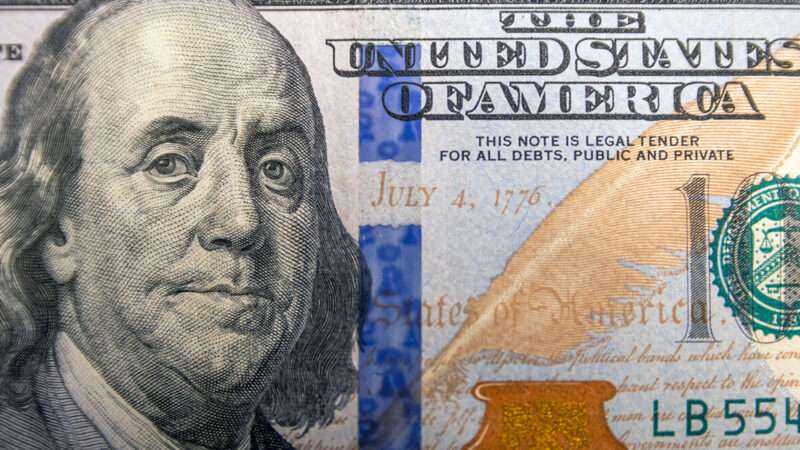
UPDATE: Since this piece was published in the August/September issue, the Supreme Court declared President Joe Biden's student loan forgiveness plan unconstitutional. Read Reason's coverage of the decision here, here, and here.
If the U.S. Supreme Court nixes President Joe Biden's plan to forgive up to $20,000 in federal student loan debt for millions of borrowers, another portion of Biden's proposal could still leave taxpayers on the hook. And the final price tag for that aspect of Biden's policy could be double what his administration originally claimed.
Currently, federal student loan payments can be capped at 10 percent of a borrower's discretionary income, which the Department of Education defines as any income above 150 percent of the federal poverty line. Biden plans to lower the monthly payment to just 5 percent of a borrower's discretionary income. The new rule also forgives outstanding federal student loan balances after 10 years for borrowers who took out less than $12,000 and after 20 years for everyone else.
In short, many federal student loan borrowers will be asked to make monthly payments that are 50 percent less than currently required, and a substantial number will need to make those smaller payments for half as long as they previously did before their debts are eliminated entirely. That will mean more outstanding debts that are never paid off by borrowers, leaving taxpayers with the tab.
A recent Congressional Budget Office (CBO) analysis estimates that the 10-year tab for the revised income-based repayment rule would be $230 billion. Add another $45 billion if the Supreme Court stops Biden from wiping some loans off the books completely, because that will mean more loans are subject to the new rule.
By contrast, the Department of Education projected last year that Biden's income-driven repayment plan would cost only $138 billion. The administration's estimate did not take into account the likelihood that asking fewer people to pay off their loans would result in more student borrowing. Those "behavioral effects," according to the CBO, will drive the cost higher.
Any cost estimate for a government policy that doesn't account for incentives isn't worth the paper it's printed on. This failure is a recurring one for the Department of Education, which favors politically palatable price tags over trustworthy analysis. A 2022 Government Accountability Office report found that the department lost $197 billion on various student loan programs from 1997 to 2021. The department had projected a positive return of $114 billion during that period.
Instead of addressing the root causes of this fiscal mess, such as government subsidies that inflate costs, Biden is doubling down. It seems certain that the president's plan to help students who are struggling to pay back their loans will only encourage more students to take out loans that won't be paid back.
The post Biden's Changes to Income-Based Student Loan Repayment Could Cost Billions appeared first on Reason.com.







